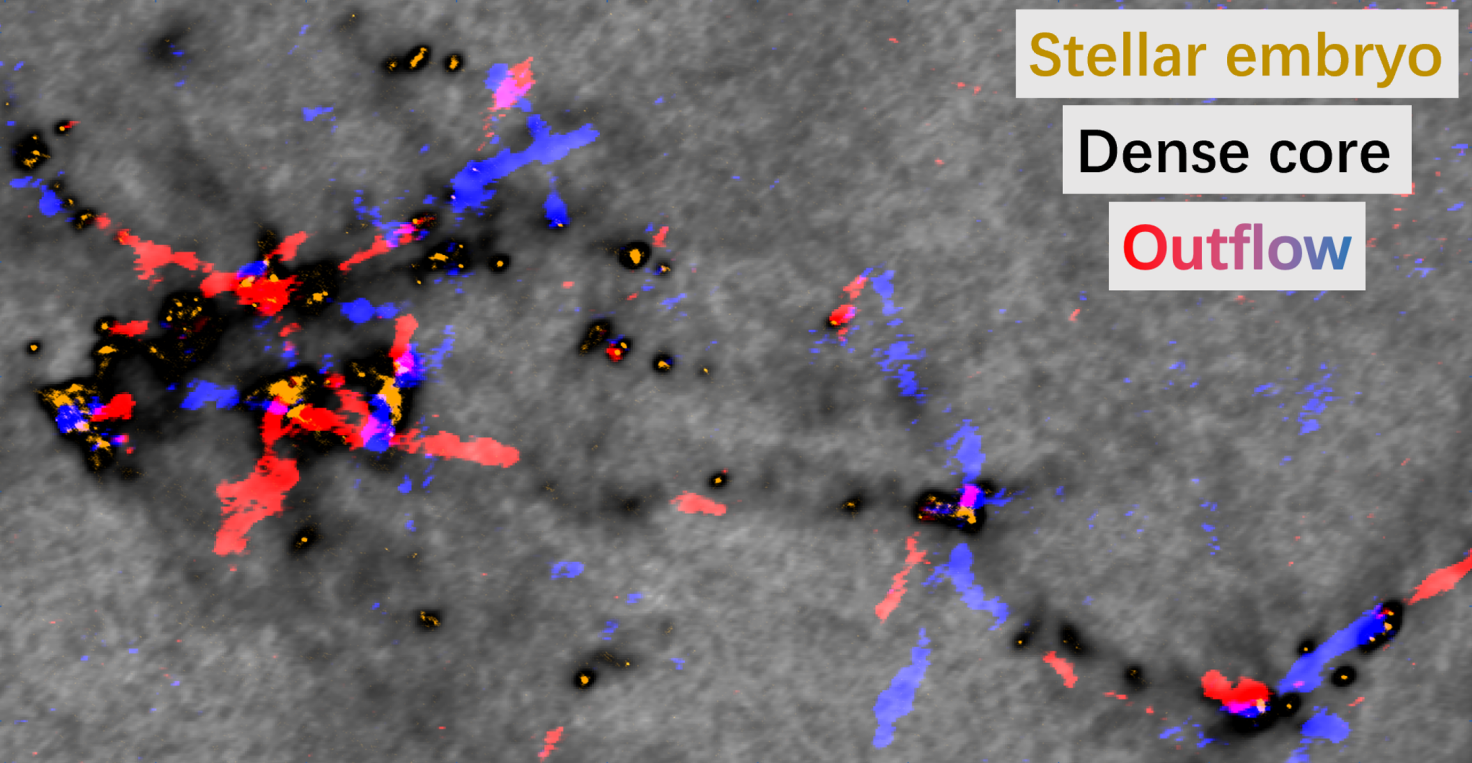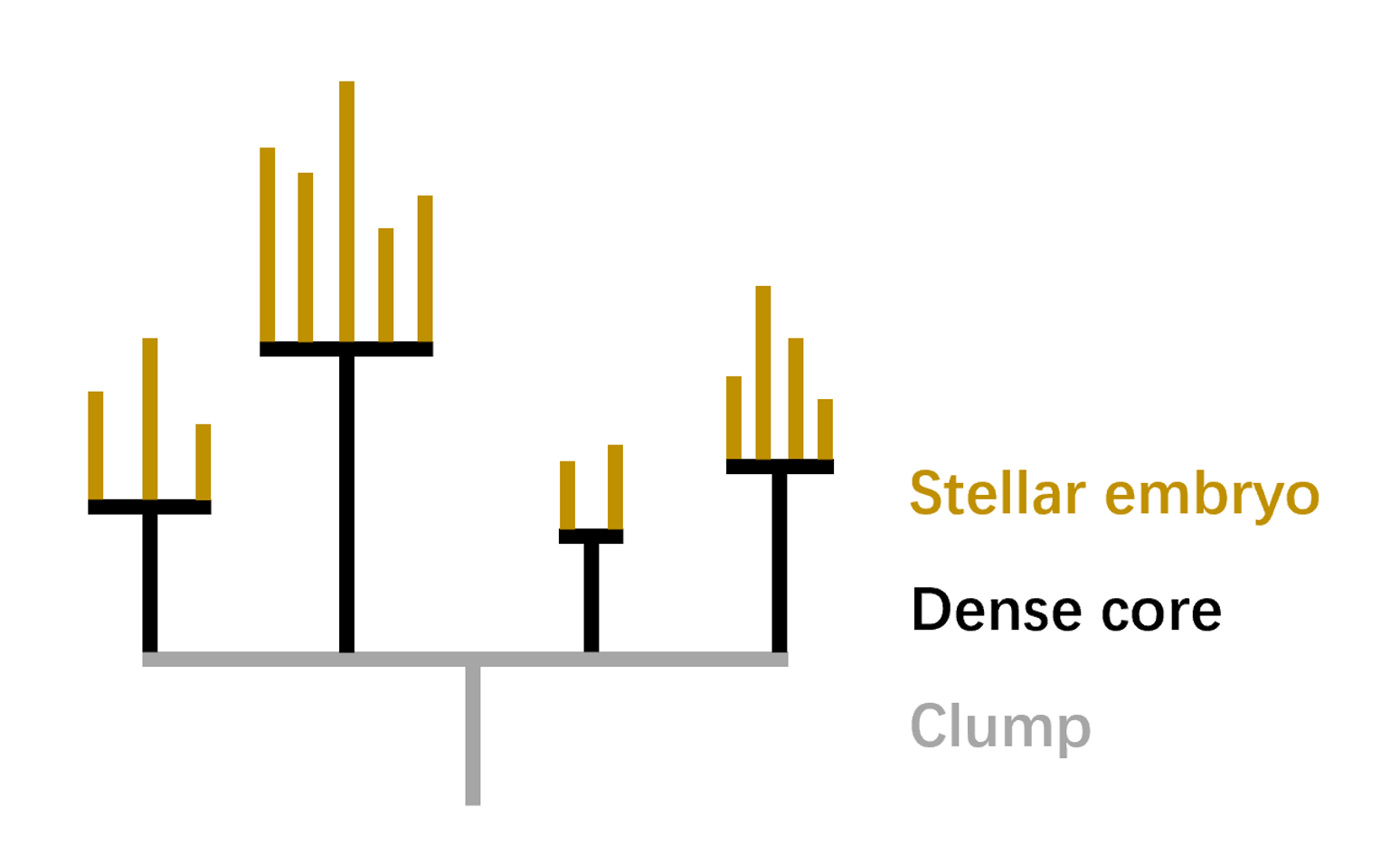An international research team led by Dr. ZHANG Suinan from the Shanghai Astronomical Observatory of the Chinese Academy of Sciences has uncovered the unique mechanisms governing star formation in the Central Molecular Zone (CMZ) of the Milky Way.
Using observations from the Atacama Large Millimeter/submillimeter Array (ALMA), the team's findings, published on March 13 in The Astrophysical Journal Letters, show that turbulent conditions in the Galactic Center suppress the formation of massive stars through a fragmented, hierarchical star formation process.
The CMZ, which contains tens of millions of solar masses of gas at the heart of the Galaxy, produces far fewer stars than expected. While previous studies linked this anomaly to the chaotic environment of the Galactic Center-including intense turbulence, strong magnetic fields, energetic feedback from the supermassive black hole Sagittarius A*, and frequent supernova explosions-the lack of high-resolution observations has made it difficult to fully explore the underproduction of stars in this region.
By leveraging ALMA's unprecedented resolution and sensitivity, the researchers identified several "stellar embryo clusters" within the CMZ. These clusters, on average a few hundred astronomical units (AU) in size, harbor nascent stars. The clusters may eventually evolve into massive star systems over millions of years. Despite the overall star formation efficiency in the CMZ being similar to that of other active star-forming regions like Sagittarius B2, these young clusters in the CMZ exhibit a notable scarcity of young, massive stars. In contrast to the smooth, centralized distributions of young clusters seen in the Galaxy's disk, the CMZ's young clusters display a fragmented and hierarchical structure.

One of the stellar embryo clusters revealed by high-resolution ALMA observations. (Image by ZHANG Suinan)
The researchers proposed that extreme turbulence in the Galactic Center shreds gas into smaller parcels, forcing stars to form in fragmented, nested groups. This hierarchical process limits gas accretion, stifling the growth of massive stars. "Our findings suggest that these young CMZ clusters are not simply inefficient at forming stars overall - they preferentially produce low-mass stars over massive ones," said Dr. ZHANG. "The CMZ has a distinct personality."
Earlier studies from the team had already detected hundreds of dense cores in the CMZ, which are linked to gas outflows associated with the accretion of newly formed stars. "These outflows hinted at hidden stellar embryos, inspiring us to request higher-resolution observations to resolve individual forming stars," said Dr. LU Xing, coauthor and principal investigator of the ALMA project.
This discovery not only sheds light on how extreme environments regulate star formation in the Galactic Center but also provides valuable insights into the nuclear regions of other galaxies and star formation in the early universe. "We are now pushing forward dynamical analyses of these young clusters to unravel the star formation mysteries of the CMZ," said Dr. ZHANG. "Understanding the CMZ is crucial for solving larger astrophysical puzzles."

A sketch showing the hierarchical structure of a young cluster. (Image by ZHANG Suinan)






